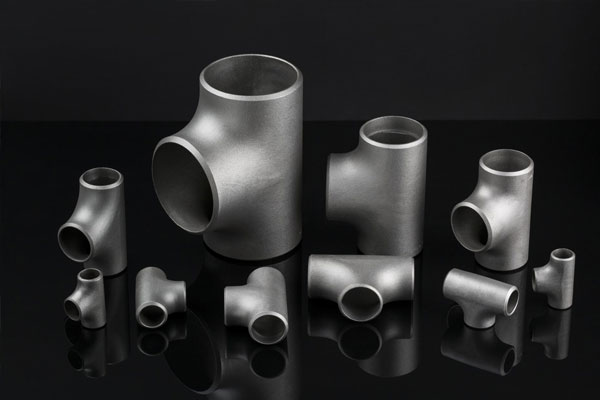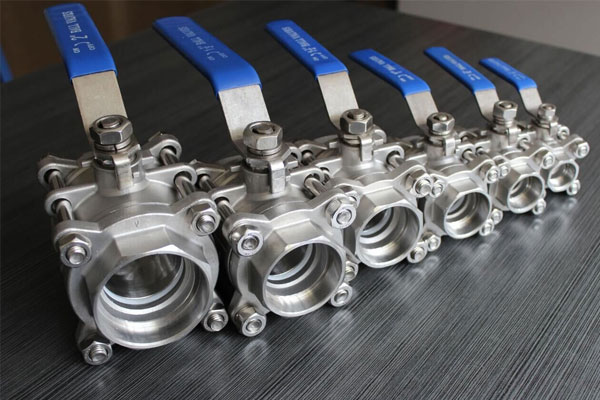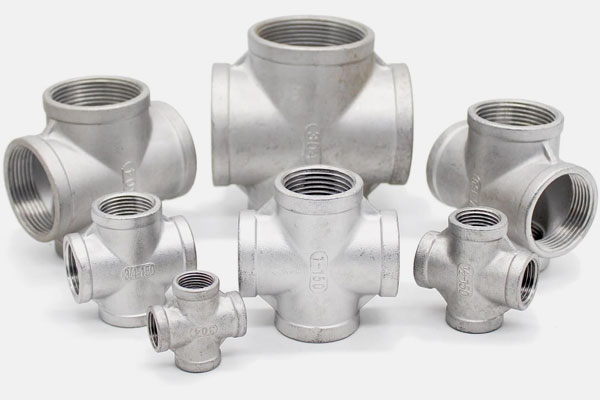Pipe Fittings
Pipe fittings are essential for constructing and maintaining pipelines, ensuring efficient flow and connectivity.
Below is a guide to various types of pipe fittings used in the oil and gas industry, along with their functions, types, and material options.

Function: Change the flow direction in pipelines.
Types:
- 45° Elbow: For gradual directional changes.
- 90° Elbow: For sharper turns.
Materials: Carbon steel, stainless steel, alloy steel.

Function: Allows branching from the main pipeline.
Types:
- Equal Tee: Same diameter as the main pipe.
- Reducing Tee: Smaller diameter branch.
Materials: Carbon steel, stainless steel, copper-nickel.

Function: Connect pipes of varying diameters.
Types:
- Concentric Reducer: Aligns pipes on the same axis.
- Eccentric Reducer: Used in horizontal pipelines to avoid air pockets.
Materials: Carbon steel, stainless steel, alloy steel, plastic.

Function: Extend pipelines by joining two pipes.
Types:
- Full Coupling: Connects pipes of the same diameter.
- Half Coupling: Joins pipes of differing diameters.
Materials: Steel, iron, plastic.

Function: Connects pipes and equipment, enabling easy assembly and disassembly.
Types:
- Weld Neck: High-pressure applications.
- Slip-On: Easy installation, low pressure.
- Blind: Closes pipeline ends.
- Socket Weld: Ideal for small pipelines.
Materials: Stainless steel, carbon steel, alloy steel.

Function: Regulate flow within pipelines.
Types:
- Gate Valve: On/off control.
- Globe Valve: Precise throttling.
- Ball Valve: Quick on/off with a 90-degree turn.
- Check Valve: Flow control in one direction.
Materials: Stainless steel, brass, bronze.

Function: Close off pipeline ends.
Types:
- Threaded Cap: Screws onto pipe end.
- Welded Cap: Permanent closure.
Materials: Carbon steel, stainless steel.

Function: Easily connect or disconnect pipes.
Materials: Carbon steel, stainless steel, malleable iron.

Function: Connects four pipes in a cross shape.
Materials: Stainless steel, alloy steel.

Function: Short pipe sections for connections.
Types:
- Threaded Nipple: Threads on both ends.
- Swaged Nipple: Reduced at one end for varied pipe sizes.
Materials: Carbon steel, stainless steel, brass.

Function: Connects a large pipe with a smaller branch.
Types:
- Weldolet: Welded branch.
- Sockolet: Socket-welded.
- Thredolet: Threaded.
Materials: Carbon steel, alloy steel.

Function: Reduce pipe size by connecting pipes of different diameters.
Materials: Carbon steel, stainless steel, alloy steel.

Function: Provide stability to prevent pipe sagging.
Materials: Carbon steel, stainless steel, galvanized steel.
Materials for Pipe Fittings
Pipe fittings in the oil and gas industry must withstand harsh conditions, pressure, and corrosive substances. Common materials include:
- Carbon Steel: High strength for high-pressure applications.
- Stainless Steel: Corrosion-resistant, ideal for acidic or saline environments.
- Alloy Steel: Suitable for high-temperature, high-pressure settings.
- Duplex Stainless Steel: Higher strength and corrosion resistance.
- Plastic (HDPE, PVC): Used in low-pressure, non-corrosive environments.

